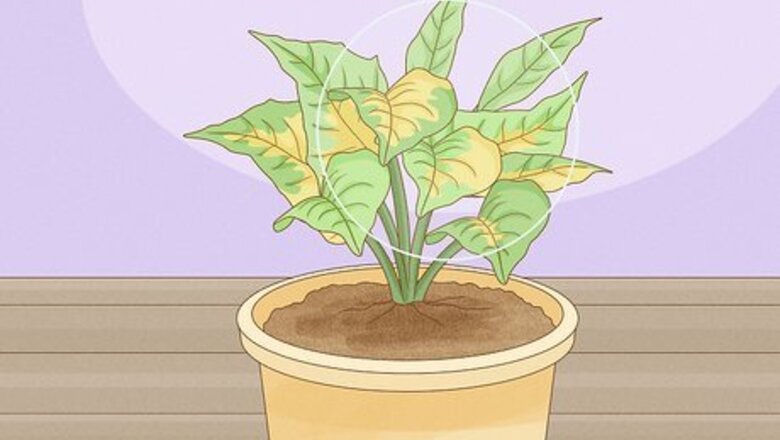
views
Identifying Spider Mites
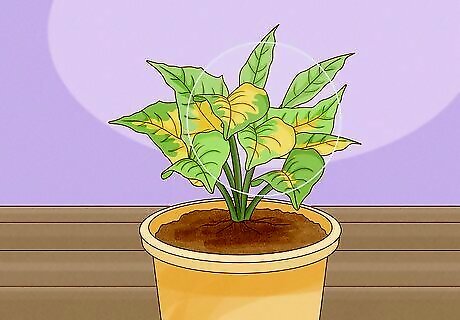
Look at the surface of the leaves. If your plant is indeed infested with spider mites, the leaves may have yellow blotches on them. When light falls on the leaves, you may see a silvered look or even streaks of bronze or silver. While mites usually attack the underside of leaves, they can sometimes get greedy and also eat the upper side of leaves and flowers. Eventually, the mites will suck holes right through the leaves - providing the most obvious evidence of infestation. Even if you can't find holes in the leaves, your plant may still have spider mites, so keep an eye out for other signs of infestation. Other signs of mite damage include distortion, deformation, wilting, spotting, streaking or discoloration on the surface of the leaves. If the mite damage gets particularly bad, the leaves may start to fall off.
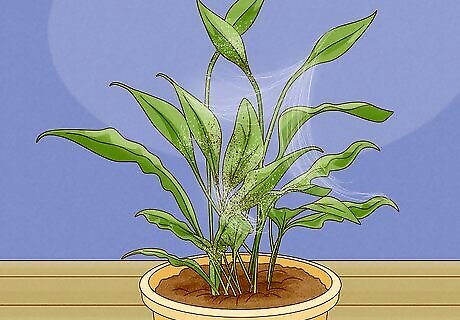
Check for white webbing on the plant. This is a giveaway sign of some spider mites. The webbing usually clusters around feeding areas. Note that not all species of spider mite will produce webbing though.
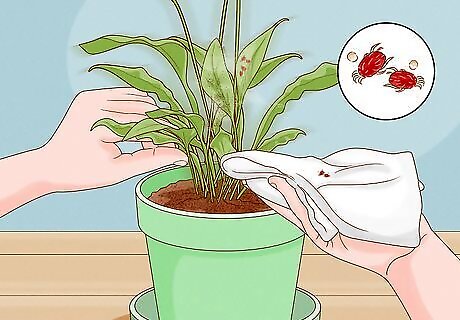
Confirm the presence of spider mites. Spider mites are so small, they can be very difficult to see. However, one method you can use to confirm their presence is to take a sheet of white paper, place it beneath the plant you suspect to be infested, and lightly shake the stem of one of the leaves. A certain number of the spider mites should fall onto the paper. They can be viewed more easily with a magnifying glass. Spider mites come in a variety of colors, including red, green, yellow and brown. They have eight legs and tend to move quite slowly. Be on the lookout for spider mites with spots on their backs - these are known as two-spotted spider mites and can be particularly hard to get rid of.

Be particularly vigilant with certain species of plants. There are some plants which spider mites seem to favor more than others. In particular, pay attention to possible infestations on miniature roses, fruit trees, bananas, potted begonias, beans, mint, broad-leafed weeds, strawberries, frangipani and indoor houseplants. Be aware that the two-spotted spider mite has been known to infest over 100 different species of plants.
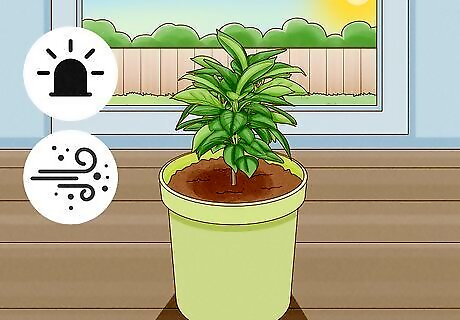
Be especially alert during dry and dusty weather conditions. These are the conditions where spider mites can cause the most damage, as they are thirsty and are seeking moisture from the leaves of the plant. This also means they are very attracted to anything grown under glass, including plants sitting inside on your windowsills.
Using Biological Methods
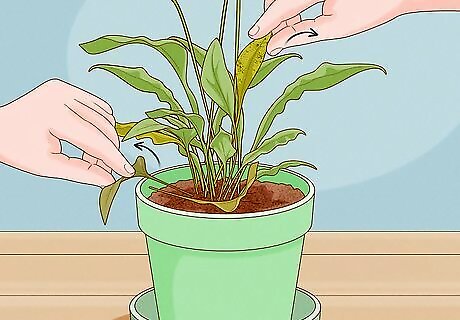
Remove badly infected parts of the plant immediately. Pick up any leaves that have fallen off the plant and pull off any badly damaged leaves from the plant itself. This will prevent the mites from affecting other plants nearby. Place the leaves in a sealed plastic bag and throw in the garbage or burn. If an entire plant is infected, you should consider removing it completely. This will give other plants a better chance at survival. Water affected plants only from above and keep removing any infected plant pieces as soon as you spot them.
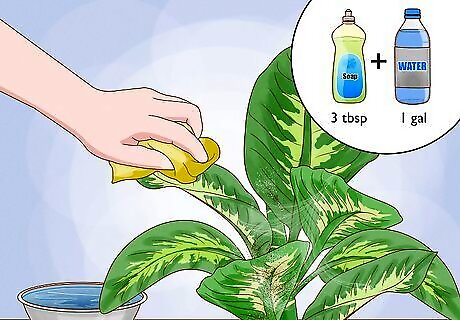
Wash and wipe indoor houseplants regularly. Given that it is fairly easy for the householder to clean indoor plants this way, it can be the most effective and non-toxic method to rid the plants of spider mites. You can use either plain water or a solution of tepid (cool-warm) water mixed with a very mild dish detergent or soap. Use 3 tablespoons (44.4 ml) of soap per gallon of water. You can use any kind of soap, but castile soap is particularly effective. Or, you can also use an insecticidal soap. Use a sponge soaked in the water to wipe down individual leaves of the plant, or place the water in a spray bottle and spritz the underside of the leaves. Apply the soap solution again, six days later, if the infestation continues. Be aware that some species of plant are particularly sensitive to soap, so consider testing the soap solution on a small section of the plant before spraying all over.
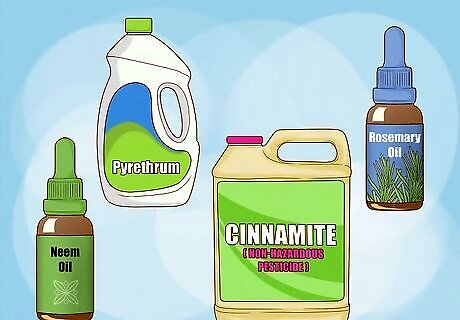
Use plant-based miticides. There are a number of commercially available miticides which use natural ingredients to kill the spider mites, but leave the plant and other insects unharmed. The most popular ones are as follows: Pyrethrum is a natural pesticide which is made from a plant closely related to the chrysanthemum. It is the best pesticide to start with when targeting spider mites, however some spider mite species have developed a resistance to it, so you should keep a close eye on plants even after spraying. Cinnamite is a non-hazardous pesticide derived from cinnamon oil. Although it is very safe to use and is effective for killing the spider mites themselves, it will not destroy the eggs. As a result, it will need to be used approximately every 3 days over a two week period, to ensure that all of the newly hatched eggs are killed also. Neem oil is a miticide derived from the nuts of the Neem tree. It is great for targeting infestations, but also works well as a mite repellent and a treatment for powdery mildew. Rosemary oil is also effective as an organic pesticide. Try spraying a solution of rosemary oil and water onto the leaves of an infested plant. The rosemary oil will kill the spider mites, but leave the beneficial, predatory species of mites alone.
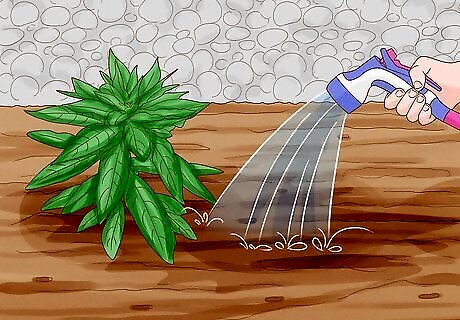
Spray outdoor plants with a hose. Attach a spray nozzle to your outdoor hose and use it to water any infested outdoor plants. Set the water to a high pressure and try to target the underside of the leaves in particular. This should help to wash spider mites away.
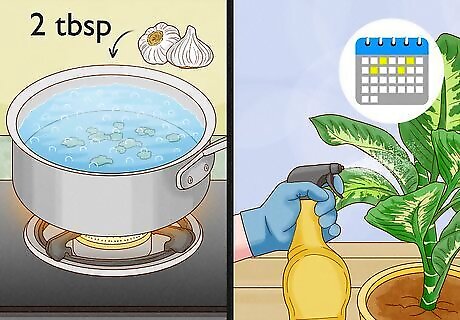
Use a homemade herbal tea. If you want to make your own miticide at home, you can make an herbal tea by mixing a tablespoon of ground cinnamon, a tablespoon of ground cloves and two tablespoons of Italian seasoning in a quart of water. Bring the water to a boil, then take off the heat. Once it has cooled slightly add 2 tablespoons (29.6 ml) of crushed fresh garlic. Leave to sit until the water cools completely, then strain through a cloth or coffee filter. Add a squirt of dish soap to the tea, then pour into a spray bottle. Spray the underside of the infested leaves with the tea every three days over a two week period. This should effectively kill the mites.
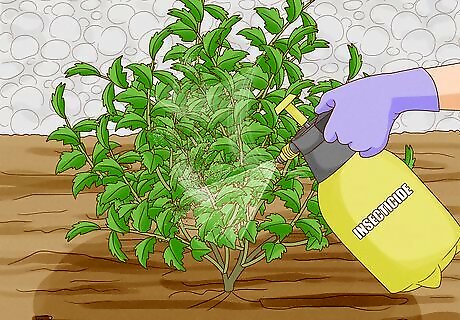
Try organic salts. Fatty acids or potassium salts can be abrasive against mite bodies. Apply these late afternoon, to give the maximum time for the wetness to remain on the plants, to get to the mites. Mist susceptible plants with water in the evening to make the environment cooler and more moist. This works well for the two-spotted spider mites which prefer warm and dry environments.
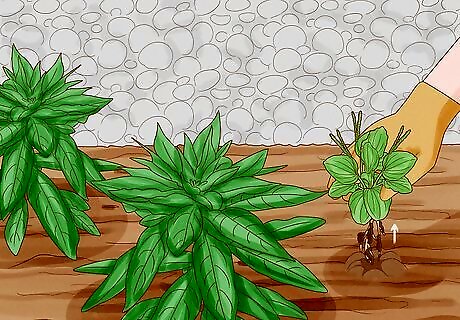
Control weeds around plants. Don't give mites extra hiding places and launchpads to attack the plants that you actually want to grow in the garden. In particular, remove all broad-leafed weeds. Remove all debris remaining after harvest. This includes removing plant stumps, fallen leaves and any other plant matter.

Encourage the presence of ladybugs and other insects that prey on spider mites. Predator insects, such as lacewing larvae, predacious thrips and ladybugs can decimate spider mite populations if encouraged to stay in your garden. However, one of the main reasons that spider mite populations develop in the first place is the use of pesticides which kill their natural predators. Therefore, you should avoid using pesticides such as carbaryl, malathion and imidacloprid. These insects can be purchased online, from garden centers or through advertisements in gardening magazines. Alternatively, herbs such as amaranth and borage can naturally attract ladybugs into your garden. Ask the supplier for details on how to make the most of using predator insects, noting that you'll have less success if using them in a mixed planting area. Predatory mites can also be used against spider mites. Look for Phytoseiulus persimilis or other predatory mite species at the garden center (ask the retailer for the brand names it comes under, as this differs from country to country), then follow the release instructions. Under the right conditions, predatory mites can decimate a spider mite population. Interestingly, ladybugs (or ladybirds) will leave predatory mites alone, targeting just the spider mites!
Using Chemicals
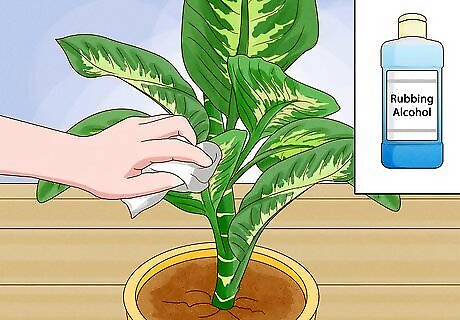
Use rubbing alcohol. Isopropyl rubbing alcohol will effectively kill spider mites. Simply pour a little of the rubbing alcohol onto a clean cloth and use it to wipe the underside of the infested plant's leaves.

Purchase a proprietary product suitable for outdoor spider mites. There are sprays or wipes available from garden centers and hardware stores. Use according to the manufacturer's instructions. If spraying specific chemicals (such as dienochlor, dicofol, azocyclotin, fenbutatin, bromopropylate, propagate), it is recommended that you do not use the same product more than three times per growing season. This will help reduce the chances of the mites gaining resistance against the chemicals.
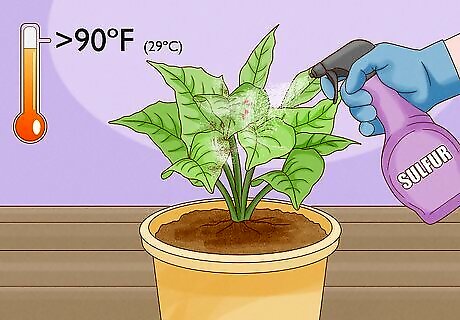
Try getting rid of the mites with liquid sulfur. Spraying liquid sulfur is another option for getting rid of spider mites. Do not use powdered sulfur because it can get into the air and you or someone else might inhale it. Make sure that you do not spray liquid sulfur within 30 days of using an oil on your plants or in temperatures above 90 degrees Fahrenheit.


















Comments
0 comment